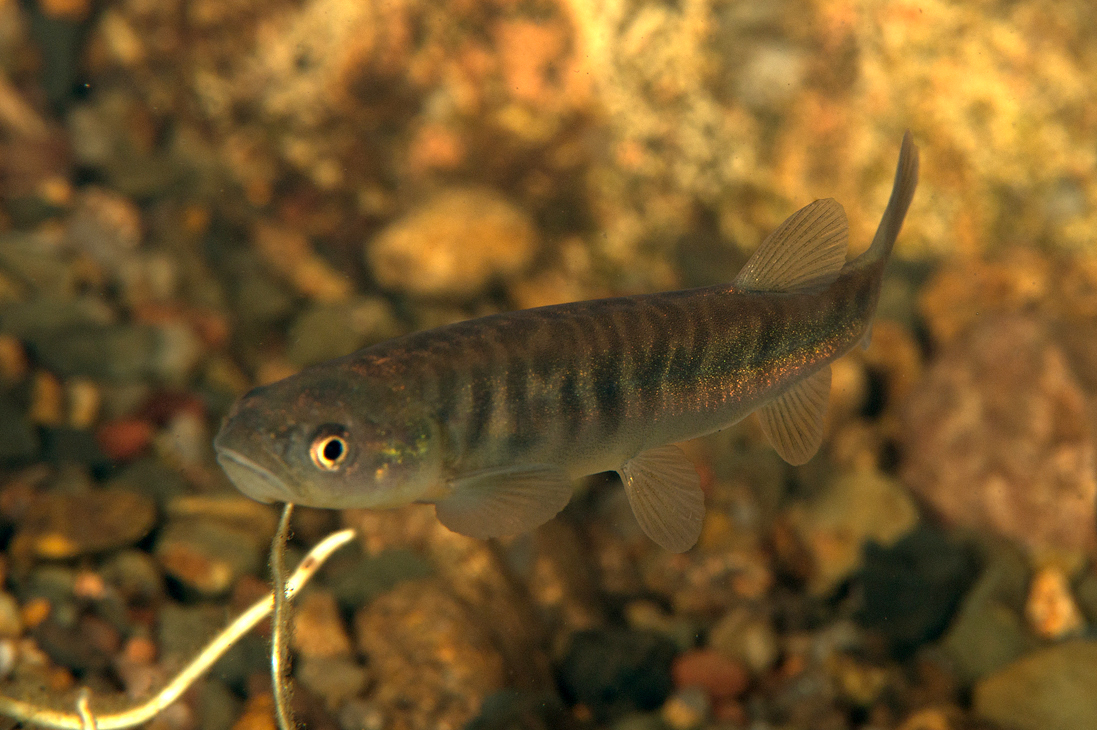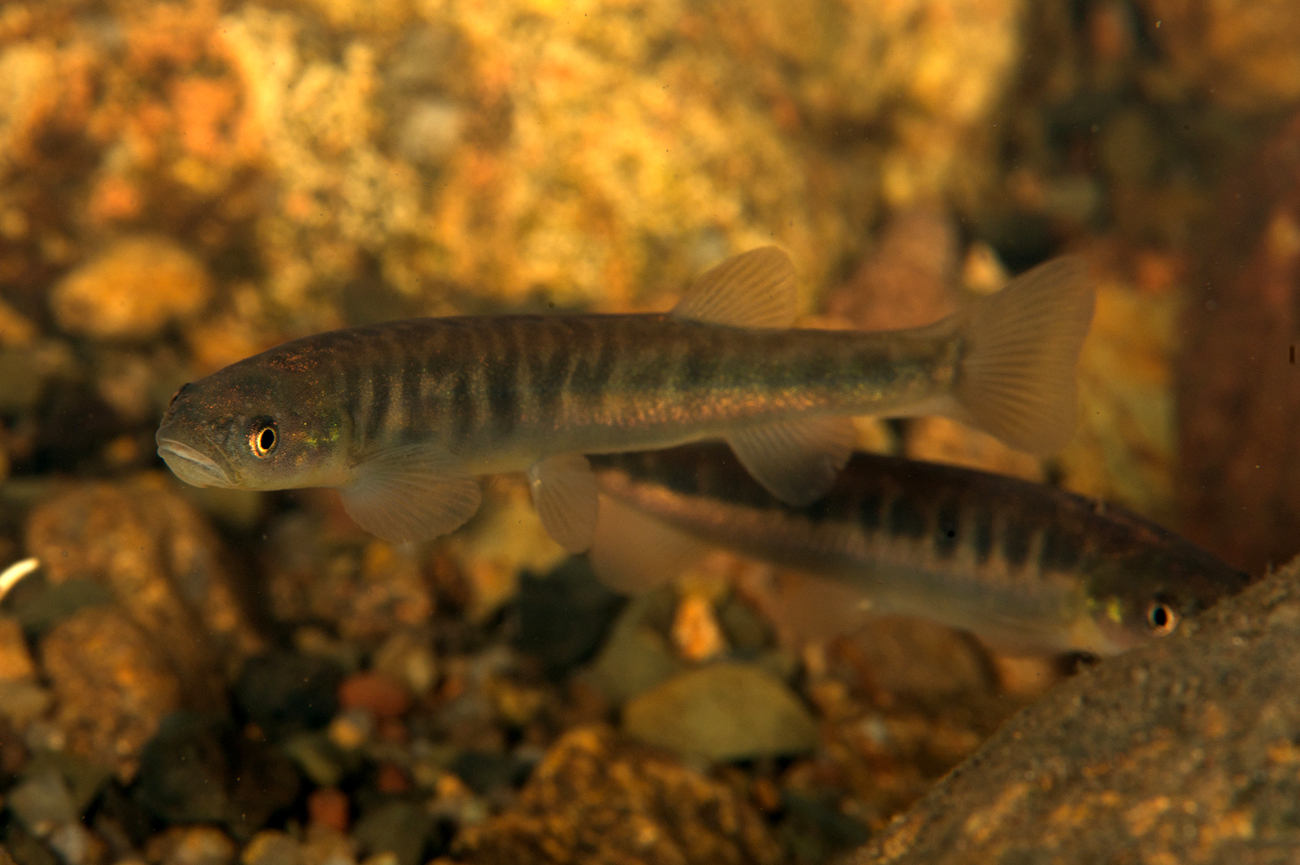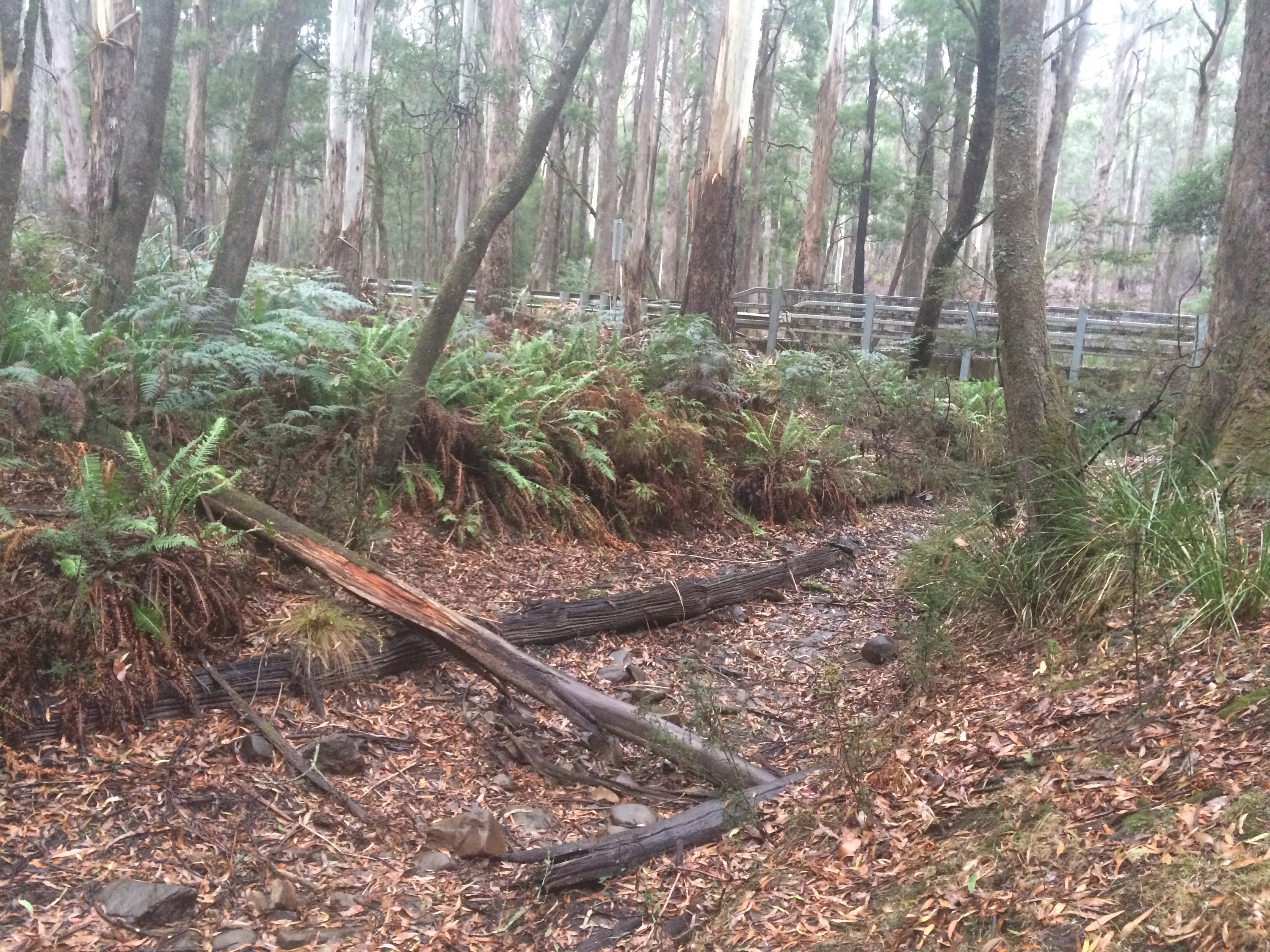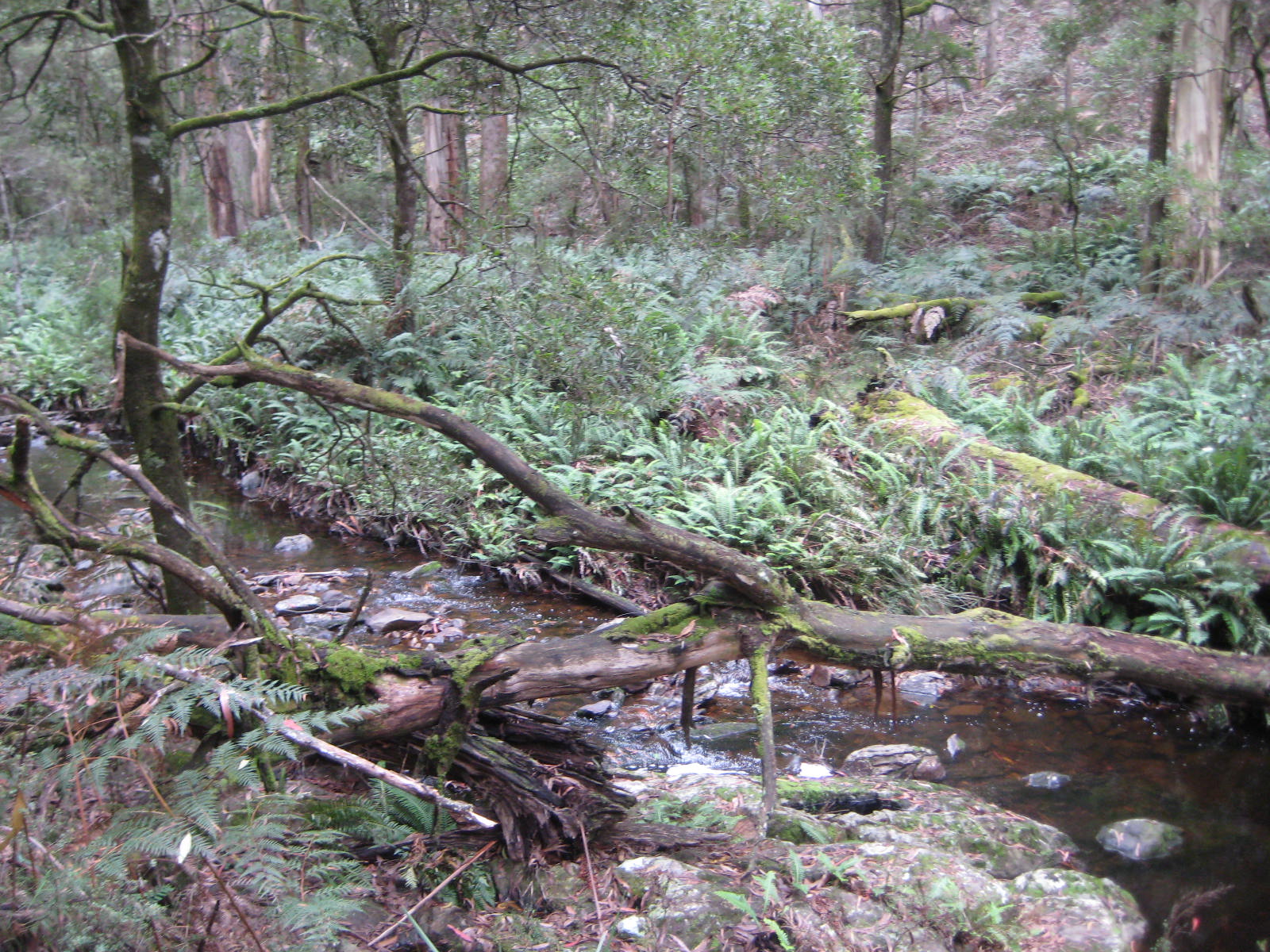I am writing this article under the pergola at Nolans Creek Picnic Ground, south of Bullarto, enjoying a much needed day of rain in the Wombat State Forest. The ferns look so happy, the lichens and mosses are revived. Small birds such as White-browed Scrubwrens forage among dripping shrubs, and a Victorian Smooth froglet calls from the dry creekbed. Their call is a very recognisable crr-r-rarck crarck pip pip pip-pip-pip pip, and I only hear it in these wetter higher parts of the Wombat.
Yes, Nolans Creek is bone dry. Part of the reason for the morning expedition is to see whether I can spot any of the native fish that live in this creek, a smooth, cigar-shaped little beauty called a galaxias. But not even the deep pools have water.
I remember coming here in summer in past years and seeing galaxia in the deep pools, along with the large tadpoles of Pobblebonks. These big taddies require pretty permanent water, as their slow growing young take over a year to mature into frogs.
If you type native fish and Wombat Forest into your search engine, most of what comes up is information on trout fishing opportunities. Trout and their relatives are introduced fish that have a devastating impact on native fish. Trout eat the eggs and young of fish such as Galaxias. The trout and native fish also compete for the same food sources. The introduced Redfin which is also very common locally also eats the eggs and young of native fish.
According to the 1999 Lerderderg Park Management plan, there are Mountain Galaxias in the Lerderderg River. This particular species of galaxias is listed as Critically Endangered on the UCN Red List. That’s big – this little fish should be well known as we try to save its last little populations!
But fish are not as well known or considered as much as other groups of animals. For example, this is my first nature diary article on fish since my contributions began in 2009! The Wombat Forestcare website, the go-to place for local biodiversity knowledge has species lists for birds, mammals, frogs, reptiles, invertebrates, a fungi field guide – but no information on fish.

Adorable! Pic by Julian Finn (!) / Museum Victoria. License: CC BY Attribution
While getting a coffee at Cliffys on the way out here, I was lucky to see a long term local who had some interesting fish knowledge to share. Steve began by emphasising that the creeks and rivers around here just aren’t the same as 20-30 years ago.
There were platypus in Jim Crow ( Jum cra) Creek, and Blackfish all through the upper Loddon. The platypus and blackfish ( a larger native fish also badly effected by trout) could persist because the dry summers still always had deep pools – drought refuges that are now dry. And one day, at the Glenyon General store many many years ago, a chap came to the store with a huge Murray Cod he had just caught, and everyone was like “where did you land that?!” And he said “oh under the bridge just here in Glenlyon”.
It is difficult for me to know what kind of Mountain Galaxias have lived in Nolans Creek. Recent work on this species by Dr Tarmo Raadik has shown that this group is actually a diverse “species complex” with maybe 15 species! I imagine they have fairly similar lifestyles, being so closely related.
The fish live in small groups, foraging and resting near boulders and rocky outcrops. They prefer crystal clear waters that are running gently over a sandy or rocky substrate.
The galaxias are usually 7 or 8 cm long, but can grow up to 14 cm. They are reproductively mature at about the end of their first year, and spawn in spring and summer – or sometimes autumn. The female lays 50 – 100 eggs on the underside of stones and boulders in riffles and at the head of pools.

This pic was also by Mr Finn on the excellent Fishes of Australia site – see below
These delicate treasures can live ONLY where there are no trout or redfin, and are endemic to Australia, meaning they are found nowhere else in the world. So I am praying for more rain – to fill the creeks for the Mountain Galaxias and Blackfish and other aquatic animals that must be struggling so in these drought times…
Martin F. Gomon & Dianne J. Bray, 2011, Mountain Galaxias, Galaxias olidus, in Fishes of Australia, accessed 29 Apr 2016
https://www.youtube.com/watch?v=PyVg-P2BPhM A delightful video of closely related Ornate Galaxias – part of the Mountain Galaxias complex.

Nolans Creek, April 2016. Lovely habitat for fish and frogs – when there is water!!!!!!

I found this pic! The same creek in April 2011. Ooh – what a lovely wet year that was! This pic was taken about 100 metres from the bridge pictured above.
0 Comments